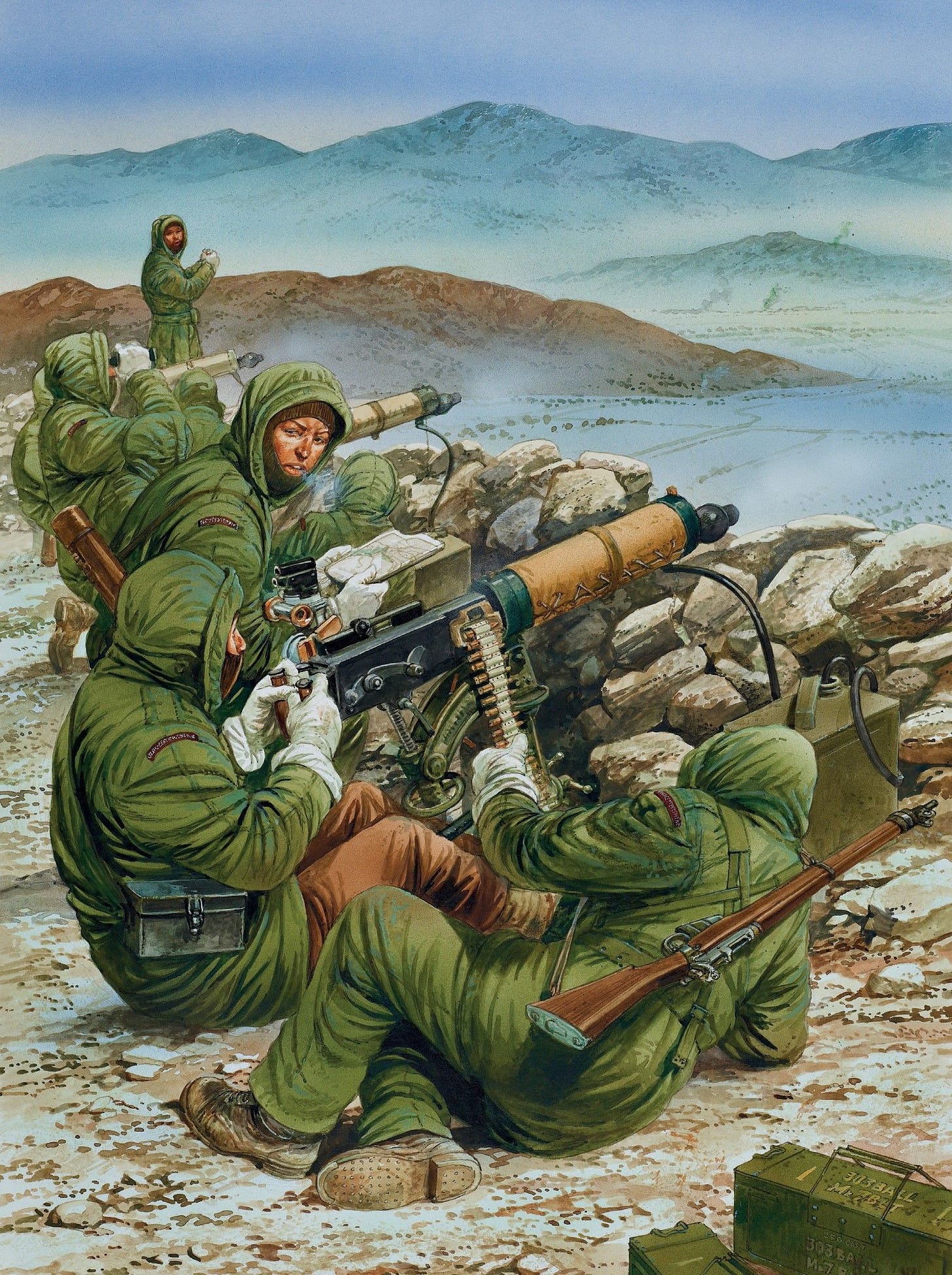Welcome to the Tactical Notebook, where you will find more than four hundred tales of armies that are, armies that were, and armies that might have been. If you like what you see, please share it with your friends. If you find it useless, tiresome, or just plain wrong, please share it with your enemies.

For the last century or so, soldiers have applied the word “doctrine” to officially approved guidebooks that describe the sorts of things that they expect to do on active service.1 Such works define terms of art, lay down rules, and explain techniques. Most of all, however, they depict ideal versions of various warlike activities, whether the defense of a piece of ground, the crossing of a river, or the seizure of a hill.
In composing these stories, the writers of doctrine draw upon two very different sources. One of these is experience, the other imagination. At times of great change in the tools of the soldier’s trade, speculation trumps experience. Conversely, in the aftermath of war, writers of manuals seek to capture lessons learned, of late, on the battlefield.
In 1940, on the eve of open American participation in the Second World War, the US Army adopted such novelties as portable radio sets, semi-automatic rifles, anti-tank guns, and motor vehicles with all-wheel drive. As American soldiers had little experience with any of these items, let alone formations provided with all of them, the authors of the doctrinal documents found themselves in the shoes of Jules Verne, spinning speculative yarns about the use of unfamiliar devices.
A few years later, soldiers rich in experience wrote doctrine of a different sort. Free of any need to depend upon imagination, they codified the lessons that they learned on the battlefield, reducing to rules the cases most familiar to them. The same thing happened in the wake of Korean War, or, to be more precise, the phase of the Korean that, thanks to the stability of fronts, proved conducive to the keeping of records.
Manuals of the last-named sort played a big role in a course I attended in 1982, when I was a young (and, if I say so myself, terribly dashing) lieutenant of Marines. From lectures based on such works, I learned to place machine guns on forward slopes of hills and ridges, thereby providing them with fields of fire worthy of their ballistic qualities. Alas, neither the authors of manuals nor the performers of the lectures bothered to mention the ease with which hostile cannoneers could drop shells atop the aforementioned machine guns.
This curious absence stems directly from the experience that had been abstracted, a war in which the champions of Comrades Stalin, Mao, and Kim Il Sung were poorly supplied with ordnance of the larger sort. However, rather than making this simple point in a footnote, led alone the body of the text, the makers of manuals and the givers of lectures turned a specific adaptation to peculiar conditions into a theory so general as to warm the heart of John Maynard Keynes.
Reflection on this experience has led me to think that, rather than attempting to distill lessons from specific cases, the writers of officially approved works on tactics ought to limit themselves to providing detailed accounts of the events in question. In this way, the reader can evaluate the methods in question in the light of some of the specific situations in which they were used.
In1989, United States Marine Corps departed from this practice by adopting a policy that reserved the term “doctrine” for the philosophies expressed in “little white books,” the progenitor and paragon of which was FMFM-1 Warfighting. In practice, however, many Marines continued to use “doctrine” to describe the contents of pedestrian manuals, which, strictly speaking, were known as “reference publications.” In 2018, Headquarters Marine Corps abandoned this distinction, replacing it with the following crime against logic, language, and the legacy of the Quantico Renaissance: “Marine Corps doctrine is the institutional vetting and compilation of fundamental principles including tactics, techniques, procedures (TTPs), and terms and symbols by which Marine Corps forces guide their actions through training, education, and operations.”



Another instance of map not territory.
Never been in uniform, so I only know about these things from books and personal anecdote. But it seems odd that doctrine would not be structured with a modicum of flexibility, at least to the extent of taking the enemy's responsive capabilities into consideration. Siting water cooled, crew-served machine guns on a forward slope against, say, an enemy equipped with assegais and knobkerries is one thing, siting the descendants of such machine guns in full view of an enemy with modern artillery seems crazy to the non-specialist. Are not all such decisions regarding the employment of weapons necessarily situation-specific -- and more particularly, enemy-specific? How can they not be?